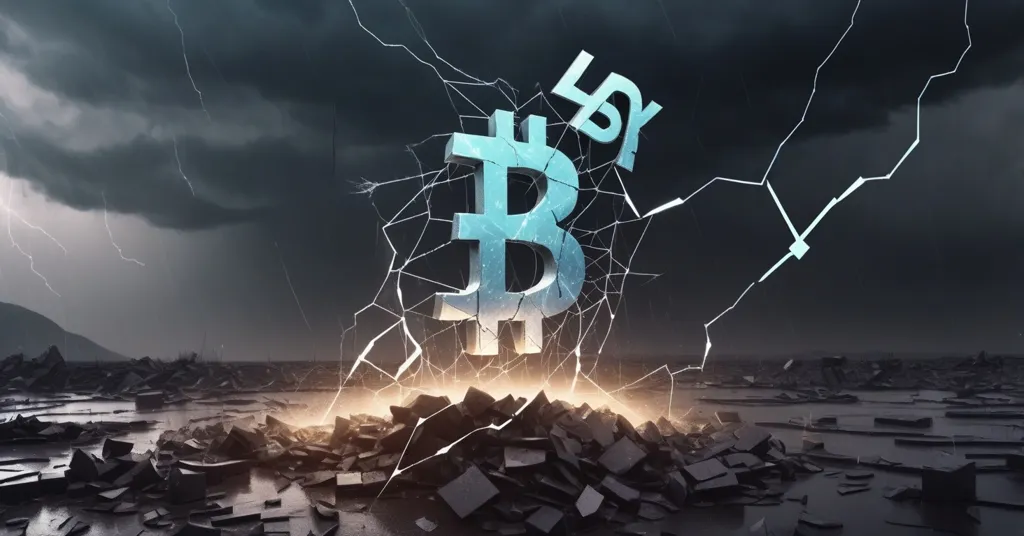USDX Crashes Below $0.60: Stables Labs’ Recovery Plan Faces Backlash After $1M Exploit

Stables Labs Unveils USDX Recovery Plan After Brutal Depeg Disaster
USDX, a synthetic stablecoin from Stables Labs, has cratered below $0.60 from its 1 USD peg, leaving holders reeling after a $1 million exploit targeting Balancer’s V2 Composable Stable pools on November 3. With shockwaves tearing through the DeFi space, Stables Labs has rolled out a phased recovery plan, but the community’s trust hangs by a thread as criticism mounts over transparency and delayed action.
- USDX Collapse: Value plunged below $0.60 post a $1M exploit on Balancer V2 pools.
- Recovery Blueprint: Phased “USDX Restoration Arrangement” with no full recovery assurance.
- User Backlash: Rage over lack of clarity and rumored communication shutdowns.
Breaking Down the Balancer Exploit: A Million-Dollar Heist
The nightmare started on November 3 when Balancer, a decentralized liquidity protocol running on Ethereum and other EVM-compatible chains, got hit hard. Its V2 Composable Stable pools, designed to manage complex stablecoin pairings for traders, became a hacker’s playground. The attacker siphoned off $1 million from the USDX and sUSDX (the staked version of USDX) pool, likely leveraging a flash loan—a DeFi maneuver where huge sums are borrowed and repaid in a single transaction to manipulate prices or exploit pool imbalances. This wasn’t just a theft; it was a trigger that sent USDX spiraling across major decentralized exchanges (DEXs) like Uniswap and PancakeSwap.
With a circulating supply previously topping $683 million, USDX was built to stick to a 1 USD peg using collateralized assets—think of it as staking property to secure a loan—and hedging strategies, which are essentially financial bets to counter price swings. But when the market turned ugly, these systems choked. As Stables Labs put it, their tech couldn’t keep pace with the chaos.
“Due to market liquidity conditions and liquidation dynamics, the market price of USDX has experienced a deviation from its reference value. The stabilization mechanism of USDX is supported by collateralized positions and hedging strategies, which may exhibit adjustment latency under extreme market conditions.” – Stables Labs
For those just dipping their toes into crypto, stablecoins are digital tokens crafted to hold steady, often tied to a fiat currency like the US dollar. Unlike heavyweights like USDC, which claim to have real cash or equivalents in reserve, synthetic stablecoins like USDX lean on algorithms and leveraged collateral to fake stability. When they depeg—losing their target value—it’s like watching a house of cards topple in a storm. Holders panic, sell off, and liquidity vanishes, leaving a mess for everyone involved.
Stables Labs’ Response: A Patchy Plan to Restore USDX
At first, Stables Labs tried to downplay the carnage, claiming USDX and sUSDX were safe while yanking liquidity from exchanges as a “precaution.” Reality slapped them hard, and they pivoted to announcing the “USDX Restoration Arrangement,” a multi-phase, voluntary effort to haul USDX back to 1 USD, as detailed in their phased recovery plan for USDX. The first step? An on-chain snapshot, basically a digital timestamp of wallet balances at the exploit’s moment, to figure out who’s owed what via a registration form. What follows is anyone’s guess—phases are vaguely outlined, timelines are nonexistent, and there’s no hard promise of full recovery. That’s cold comfort for folks already out of pocket.
“Impacted holder balances will be identified through an on-chain snapshot.” – Stables Labs
On the defense front, they’ve locked down cross-chain bridges—tools that let tokens hop between blockchains like Ethereum and BNB Chain—to stop more funds from bleeding out. They’ve blacklisted the attacker’s wallet to freeze stolen assets and teamed up with security experts to track the loot. Some progress shines through: liquidity on PancakeSwap, a Binance-backed DEX on BNB Chain, is back online and deemed safe. Other protocols tied to USDX on BNB Chain also escaped unscathed, a rare bit of good news.
“Liquidity on PancakeSwap (BNB Chain) has been restored and confirmed to be safe. All other integrated protocols on BNB Chain have also been verified as unaffected.” – Stables Labs
But don’t pop the champagne yet. Liquidity restoration on Ethereum layer-2 networks like Arbitrum and Base—cost-saving scaling solutions—is still a work in progress with no finish line in sight. Users on those chains are stuck, unable to trade or redeem USDX at anything resembling fair value, prolonging the pain.
Community Outrage: Where’s the Damn Transparency?
Let’s not sugarcoat it: the DeFi crowd is livid. Across platforms like X, USDX holders are ripping Stables Labs apart for dodging hard questions. Where’s the breakdown of collateral reserves propping up USDX? How much cash—or whatever passes for it—is there to fund repayments? Worse still, whispers are circulating that Stables Labs axed their community Discord, cutting off a vital lifeline for updates and venting. In a world obsessed with decentralization and trustlessness, this reeks of a cover-up. If you’re going to swim in DeFi waters, you don’t get to clam up when the sharks draw blood.
This isn’t just annoying—it’s a gut punch to holders who’ve seen real money vanish overnight. Without clear reserve data, no one can tell if USDX is salvageable or a lost cause. Stables Labs needs to lay out the facts, not hide behind vague press releases, or they’ll be remembered as another DeFi dumpster fire.
DeFi Dominoes: Protocols Caught in the Crossfire
The USDX depeg isn’t a solo act; it’s dragging down connected DeFi platforms with ruthless efficiency. Lista DAO, a lending protocol intertwined with USDX, had to liquidate 3.5 million USDX tokens, scraping back only 2.9 million USD1 in value—a nasty loss. Meanwhile, vaults like MEVCapital USDT and Re7Labs USD1 are drowning in absurdly high borrowing rates as USDX and sUSDX collateral tanks, with zero repayments to ease the crunch.
“We are aware and have been closely monitoring the MEVCapital USDT Vault and Re7Labs USD1 Vault, where collateral assets ($sUSDX and $USDX) continue facing abnormally high borrowing rates without repayment activity.” – Lista DAO
Even PancakeSwap waved a red flag, telling users to watch their positions in affected vaults over fears of bad loans. If this is new to you, imagine borrowing money against a car that suddenly loses half its worth—you can’t pay back the loan, so the lender seizes and sells the car at a loss, and everyone suffers. In DeFi, this can snowball into mass liquidations, potentially tanking unrelated tokens and platforms in a textbook case of contagion.
Beyond Lista DAO, smaller yield farming setups and solo liquidity providers are reportedly hurting, though hard numbers are scarce. The total damage across the ecosystem could dwarf the initial $1 million exploit as ripple effects keep spreading.
DeFi’s Dirty Laundry: A Pattern of Pain
Step back, and the USDX fiasco isn’t a fluke—it’s the latest chapter in DeFi’s saga of self-inflicted wounds. Last year, Curve Finance, a go-to for stablecoin swaps, bled $61 million in a reentrancy attack, cratering its CRV token and exposing flaws in pool design. MakerDAO, behind the over-collateralized DAI stablecoin, has endured its own horrors, like a 2020 flash crash that nuked millions in under-collateralized loans. Each hack is a dent in user confidence and a louder cry for ironclad security. The real issue isn’t whether DeFi can push boundaries—it’s whether it can stop tripping over its own feet.
Bitcoin vs. DeFi Chaos: Finding the Middle Ground
Through a Bitcoin maximalist lens, this is a glaring neon sign to stick with BTC. Bitcoin doesn’t depeg because it’s not playing dress-up as a dollar or anything else. It’s just scarce, decentralized, and unapologetically itself—no flash loan exploits or reserve scandals to be found. But let’s not pretend altcoins and other blockchains are useless. Ethereum, along with layer-2s like Arbitrum and Base, fuels the mad science of DeFi, crafting tools that could one day topple centralized finance giants. Problem is, the experiments often explode in our faces, as USDX so painfully shows.
Still, some argue synthetic stablecoins are worth the gamble. They squeeze more value out of less collateral than traditional stablecoins like USDC, offering a kind of financial alchemy. The downside? That magic turns to dust under pressure. Stables Labs may not be outright frauds, but their fumbling response is a crash course in how to torch credibility. If DeFi is serious about disrupting the status quo, it can’t keep peddling shaky code and “just trust us” excuses.
Big Picture: Growing Pains or a Broken Foundation?
As advocates for effective accelerationism—speeding up tech adoption to shatter outdated systems—we can’t dodge DeFi’s harsh learning curve. The dream of sidelining centralized financial overlords is alive, but the hazards are glaring. Every exploit like this fuels tough questions. Will everyday investors ditch DeFi after watching “stable” assets implode? Might this invite heavier regulatory hammers, with governments weaponizing “investor safety” to choke decentralized innovation? Or can the community turn these flops into fuel for stronger protocols and real accountability?
For USDX holders, the wait drags on. Stables Labs’ recovery plan dangles a lifeline but no certainties, leaving many wondering if they’ll ever recoup their losses. For the wider crypto realm, this is a brutal reminder that freedom and disruption come at a steep cost—often paid straight from your wallet. Can DeFi outgrow these gut-wrenching missteps, or are we swapping one flawed machine for another just as rickety?
Key Takeaways and Burning Questions
- What sparked the USDX depeg, and how bad did it get?
A $1 million exploit on Balancer’s V2 Composable Stable pools on November 3 gutted USDX, dropping its value below $0.60 from a 1 USD peg, worsened by liquidity droughts across DEXs. - How is Stables Labs tackling the USDX crisis?
They’ve introduced the “USDX Restoration Arrangement,” a phased plan with an on-chain snapshot to identify holders, blocked cross-chain bridges, blacklisted the attacker’s wallet, and restored some liquidity on BNB Chain’s PancakeSwap. - Why are users ready to riot over Stables Labs’ handling?
Fury stems from hazy reserve details, no instant repayments, and rumors of a Discord shutdown, shredding trust in a space that demands openness. - What’s the fallout for other DeFi platforms?
Lista DAO took a hit liquidating 3.5 million USDX for just 2.9 million USD1, while vaults like MEVCapital USDT face crippling borrowing rates, and PancakeSwap flags bad loan risks that could spread further. - What does this expose about synthetic stablecoins?
It reveals their brittleness under duress, hinging on intricate, over-leveraged setups that buckle during attacks, unlike sturdier assets like Bitcoin or over-collateralized options like DAI. - Could this reshape DeFi’s path or invite regulation?
Repeated failures may scare off retail investors and draw stricter government oversight, potentially curbing innovation unless DeFi doubles down on security over reckless growth. - Is there any upside to this DeFi disaster?
Crises like USDX’s collapse can force the industry to face its weaknesses, possibly sparking tougher protocols and accountability—if projects like Stables Labs heed the backlash and rebuild trust.



